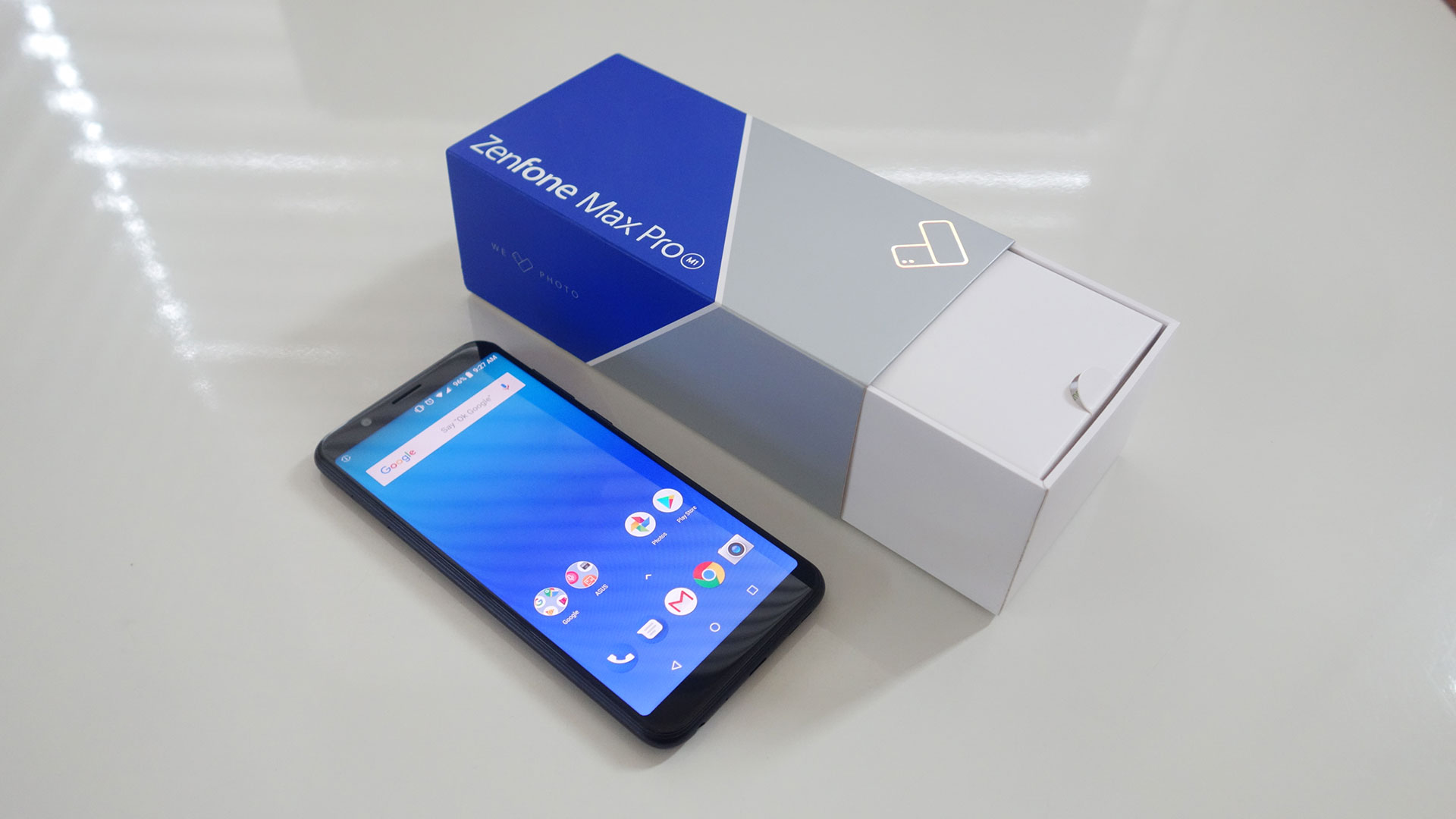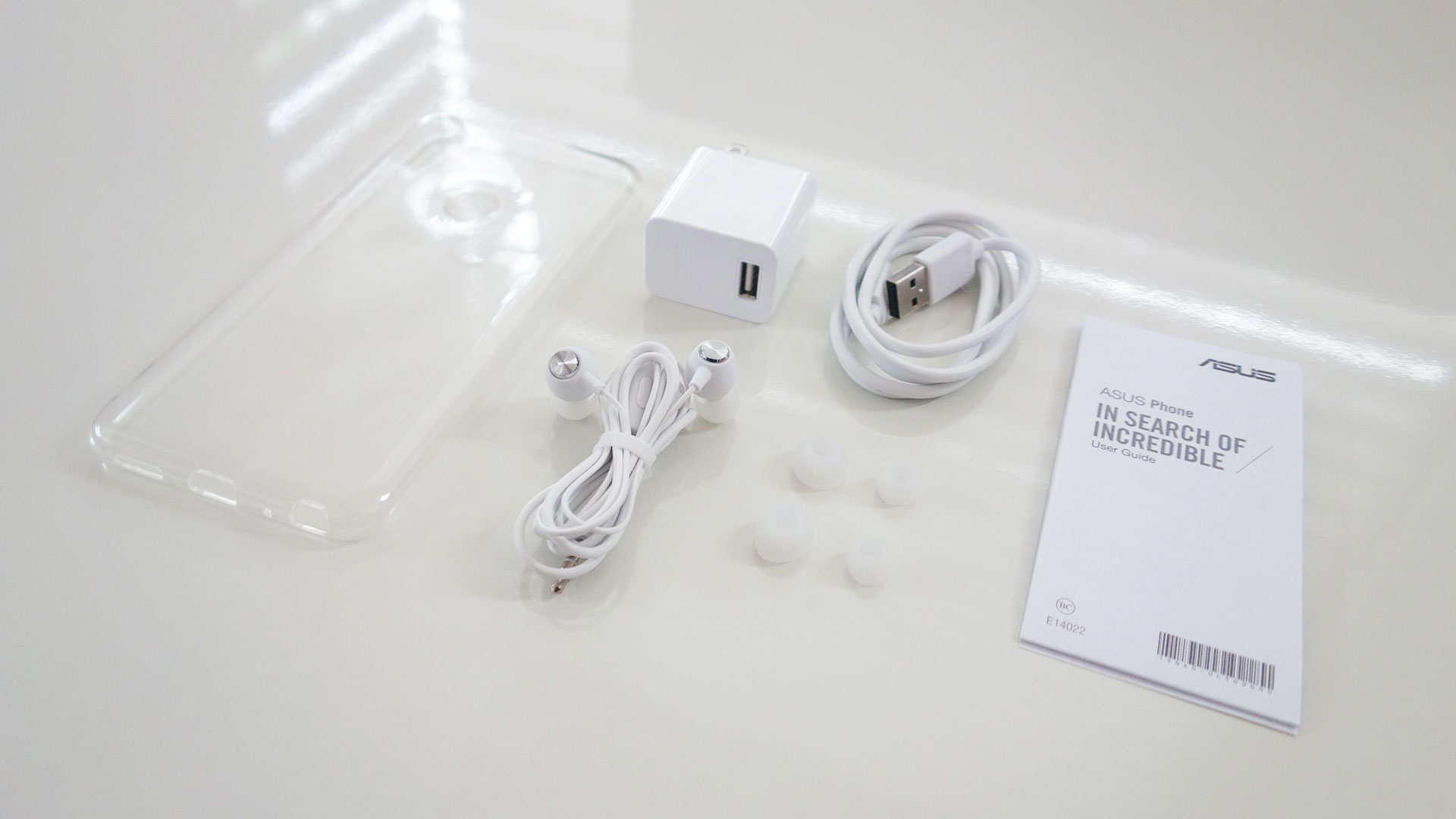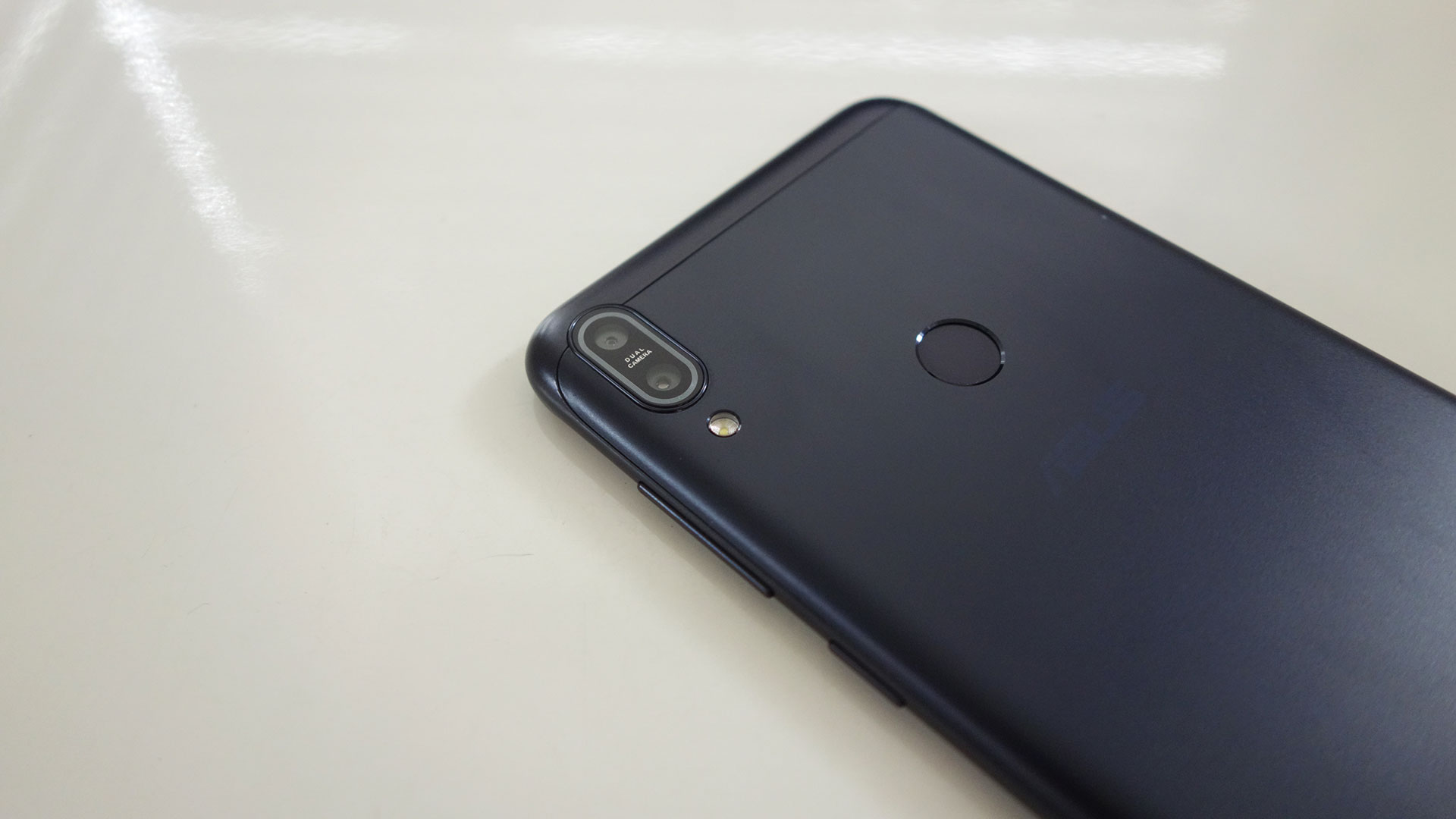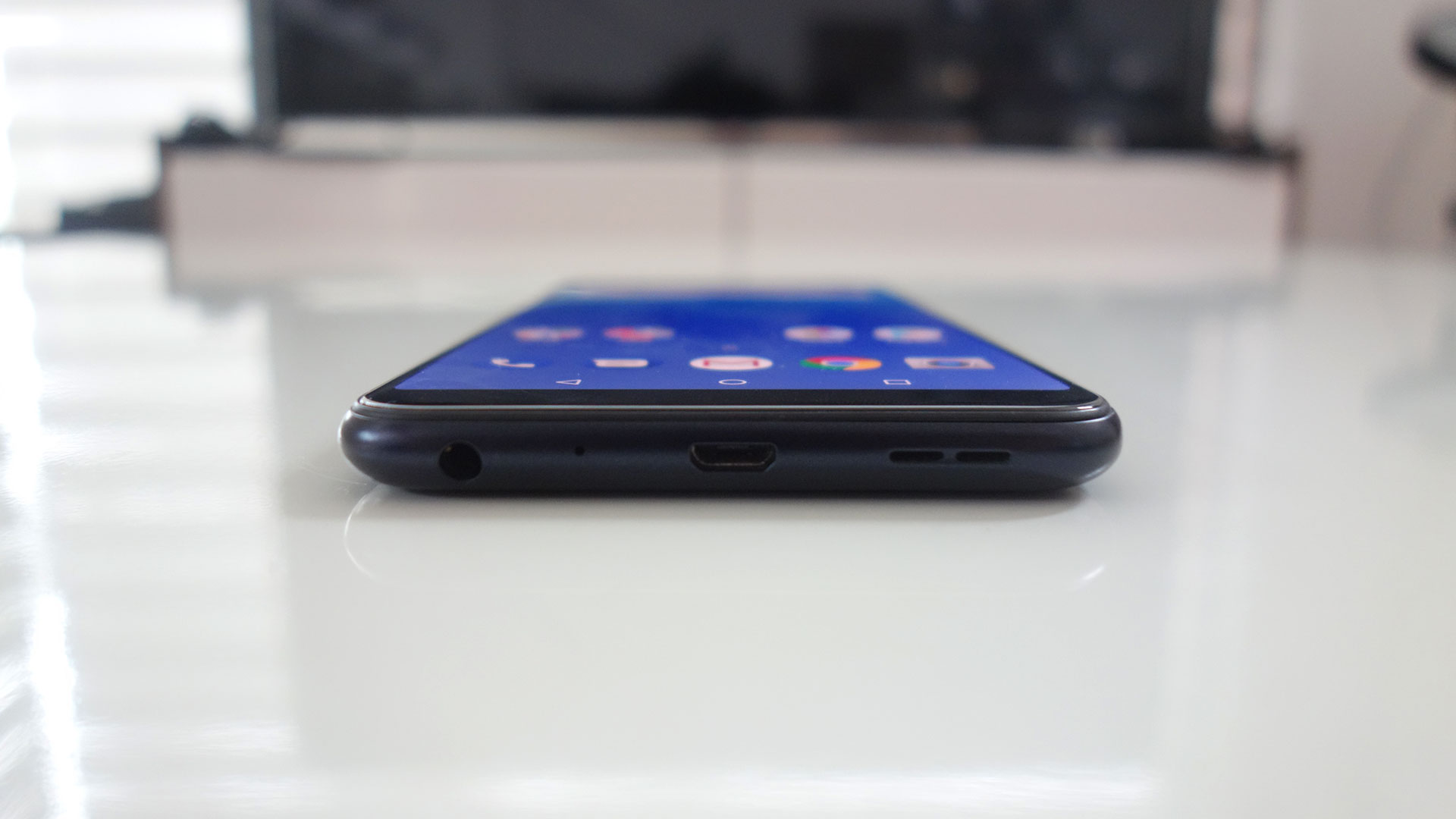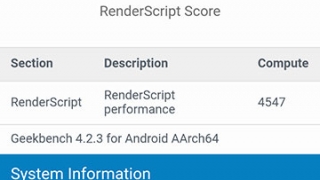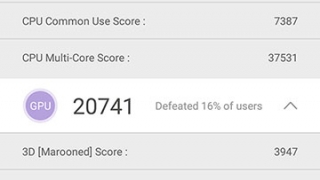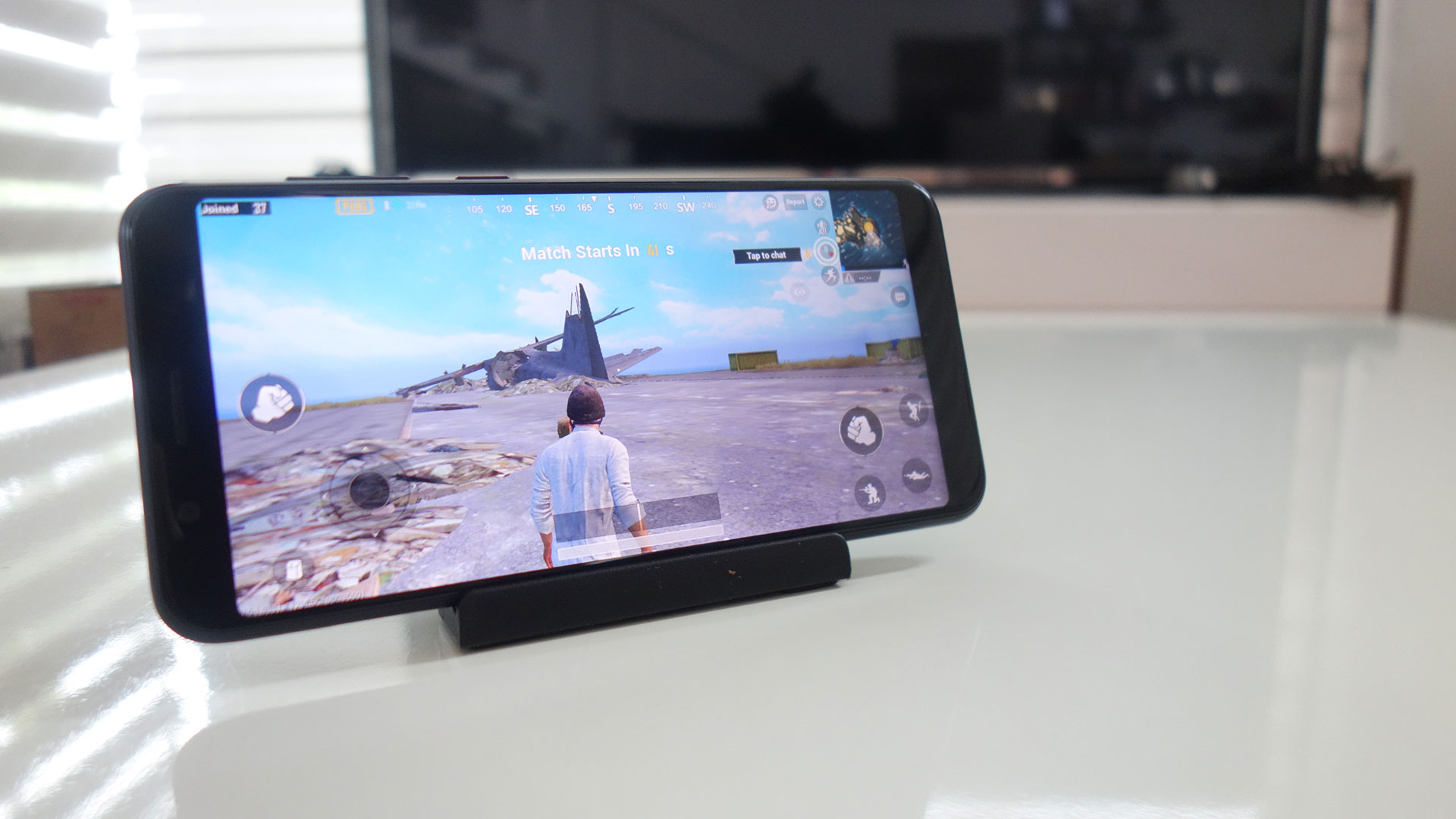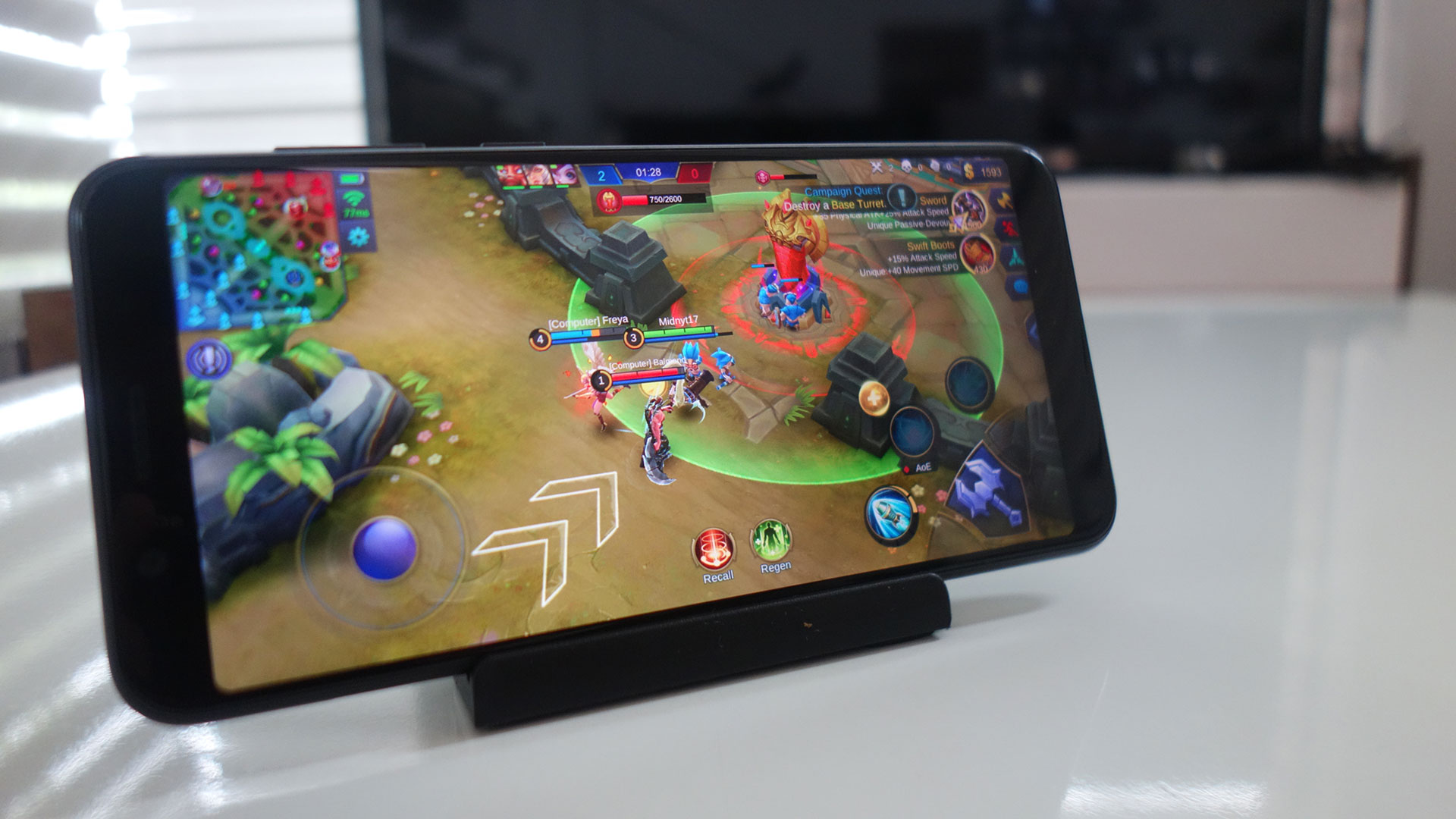When ASUS launched its new Zenfone 5 line of smartphones, a lot of people saw it as a return to form for the company, with their competitive specifications and price tags. And ASUS has continued that trend with the its Zenfone Max Pro M1, the company’s latest battery-centric smartphone.
The Max Pro M1 isn’t only targeted at those who are looking for a device with a long battery life though, ASUS has specifically designed its latest budget smartphone for gamers on-the-go; those who want to be able to play their mobile games smoothly without worrying about their battery and their wallet by combining impressive specifications, a large battery, and a incredibly competitive price tag.
Design
Given its place in the budget smartphone bracket, the packaging of the Max Pro M1 isn’t anything fancy. Instead of a thick cardboard inner box coupled with an equally thick cover, the white inner box is paired with a thin sleeve. The rest of the packaging is par for the course though. The phone is placed in a plastic sleeve under the usual thin cardboard box that holds the included clear case, manuals, and SIM card tray pin. Under the phone are the charging adapter, USB cable, and included headset.
The simplicity of the packaging translates onto the Max Pro’s design as well. The phone features a sleek and simple design with curved edges, making it easier to grip. It features an almost completely glass front panel that covers both the display and its top and bottom bezels. The front panel is bordered by a thin frame that sits into the device’s aluminum mid-frame. The top and bottom of the mid-frame frame extend to the back of the device by almost a centimeter so the metal alloy backplate doesn’t cover the entirety of the device’s rear. The back plate also sits a little deeper into the mid-frame so it doesn’t sit flush with it.
The mid-frame and backplate also have cutouts for the dual rear camera assembly. The rear cameras are protected by a glass panel and is bordered by an aluminum frame. The camera assembly very slightly protrudes from the rear of the device so the phone doesn’t lie completely flat when placed on a horizontal surface. The protrusion is discreet enough that it really doesn’t take away from the look of the device. The power and volume buttons of the Max Pro M1, both of which are placed on the right-hand edge, are also pretty discreet.
The Max Pro M1 also features a triple SIM card slot, allowing users to put in two nano SIM cards and one microSD card, which is a big advantage and selling point for phones in the Max Pro M1’s price bracket. Many budget smartphone users utilize multiple SIM cards from different providers because it allows them to save more money on usage. The use of a 3.5mm port and a micro USB port also suits budget users as micro USB cables as well as wired headphones or earphones are significantly more prominent and affordable than USB Type C cables or wireless audio devices.
While the Max Pro M1’s metal body makes the phone feel quite durable, although I’d still recommend using the included clear case with the Max Pro M1 to prevent dents and scratches on the metal body. The backplate is also a fingerprint and oil magnet, which gives more reason to use the case. Additionally, the front glass panel of the Max Pro M1 isn’t protected by popular Corning Gorilla Glass so a tempered glass protector or even a conventional film screen protector is recommended.
The 6-inch display (or more specifically a 5.99-inch display) of the Max Pro M1 features rounded corners, which are a very nice tough to make the bezels less imposing. While the display does have very minimal bezels on its sides, the top and bottom bezels still measure about a centimeter. Similar to the rounded display corners, the similarly sized top and bottom bezels help make them less imposing on the display. Also, in spite of its 6-inch display, the 18:9 ratio of the screen makes the Max Pro M1 longer rather than wider, which helps make it easier to grip vertically with one hand.
The Max Pro M1’s display uses an IPS LCD panel at a resolution of 2160 x 1080 pixels and a pixel density of ~404ppi. In spite using an IPS panel and featuring a lower pixel density, the screen of the Max Pro M1 is still pretty impressive for a display in its price bracket. The display is still crisp and bright enough for use under sunlight, the colors are vibrant, the contrast levels are impressive, and the viewing angles are decent enough. While it won’t beat out OLED displays from higher-priced phones, it’s an impressive display nonetheless.
The presence of the top and bottom bezels also make the Max Pro M1 easier to grip with two hands in landscape when playing games as they provide an area for the user to rest their thumbs when they’re not tapping or pressing on the display. They also allow users to hold the device in landscape with one hand and help users have a more secure grip. The similarly sized bezels also allow the user’s thumbs to be placed at the same distance from the screen.
While the combination of its large display and metal body make the Max Pro M1 feel rather hefty and easy to grip, it still feels very light (weighing only 180 grams) and didn’t feel fatiguing either when using it vertically with one hand or even after a few hours of playing in landscape with both hands.
Performance
Unlike the Zenfone Max M1 with its ZenUI interface, the Max Pro M1 comes with Pure Android. Pure is an almost stock version of Android, based on 8.1 Oreo, with only a minor visual differences. It’s the first Zenfone to do so and the device benefits from it greatly. Firstly, Pure Android allows ASUS to push Android OS updates to the Max Pro M1 much faster as there’s significantly less work needed to make updates compatible with the Max Pro M1.
Pure Android provide a much cleaner experience with the removal of all the additional apps and features present with ZenUI. Along with the standard Google apps that come with all Android phones, the Max Pro M1 starts with only a handful of apps such as camera, calculator, sound recorder, and FM radio apps. The use of Pure Android also means there’s less apps running in the background, making for a smoother and faster experience when using the Max Pro M1.
The Max Pro M1’s lighter interface allows its Qualcomm Snapdragon 636 processor to allot more power to running more intensive functions such as processing data and running games. It came as quite a surprise when ASUS revealed that the Max Pro M1 would be powered by the Snapdragon 636. Not only is it a considerable jump from the Snapdragon 425/430 of the previously released Max M1 but it’s also the same processor that’s powering the Zenfone 5, the mid-range model of the company’s flagship line.
While the Max Pro M1 is backed by a powerful processor in the Snapdragon 636, the company expectedly had to differentiate it from its flagship line and keep its cost down in several ways, one of which is giving the Max Pro M1 only 3GB of RAM as opposed to the 4GB on the Zenfone 5. Although, it also must be noted that both phones have variants with higher memory, specifically 4GB for the Max Pro M1 and 6GB for the Zenfone 5. Regardless, 3GB of RAM is enough for many people and functions in spite being somewhat more limited in multitasking. Additionally, running Pure Android also means there’s more RAM for active apps and games.
We ran the Max Pro M1 through several benchmark tests to give us an idea of how well it performs. We used AnTuTu Benchmark, a general smartphone benchmark; Geekbench 4, which has separate benchmarks for the smartphones CPU, GPU, and battery; and 3DMark, which is a GPU-intensive benchmark that is usually used to see how well a device can handle graphics-intensive applications such as mobile games.
As expected, the Max Pro M1 performed well in our benchmark tests for a smartphone in its price-range because of the combination of its Snapdragon 636 processor and Adreno 509 graphics chip. While it expectedly didn’t perform as well as flagship devices, such as the Samsung Galaxy S9, it is still one of the best performers in its price bracket, beating out the likes of the OPPO A83 and the Xiaomi Redmi 5 Plus.
As previously mentioned, ASUS has both designed and marketed the Max Pro M1 as a device for mobile gamers due to its impressive specifications and large battery, so we tried out several of today’s most popular mobile games on the Max Pro M1 to see how well it performs in real-world use. We tried out games such as Mobile Legends, Arena of Valor, PUBG Mobile, Rules of Survival, and Dragon Nest M.
All the games we tried on the Max Pro M1 performed very well, with no significant issues with frame rate or loading times. While the performance doesn’t match those by flagship smartphones and it won’t be able to run games specifically designed for them, the Max Pro M1 is easily capable of running most, if not all of today’s most popular mobile games at a fraction of the cost of a flagship smartphone.
Backing the Max Pro M1’s impressive performance is it’s large 5,000 mAh battery, the phone’s other main feature and selling point. The Max Pro M1’s large battery is easily capable of keeping the device alive for several days of minimal usage, which includes having the phone mostly on standby and occasionally using its camera to snap several photos. Even with heavy usage, the phone can last for up to two days, which includes several hours of gaming and regular usage of the phone’s data connection. We never had to worry about running out of battery in the middle of the day with the Max Pro M1. And even with its large battery, charging the Max Pro M1 didn’t take too long. Charging it from about 10% to 100% only took around 3 hours, which is pretty impressive considering its humongous battery while having no Quick Charge support.
The speaker on the Max Pro M1 is pretty loud but as with most speakers of its type, sound clarity and range suffer greatly at high volumes, which makes the inclusion of a 3.5mm port all the more valuable as users will have the option to use wired headphones or earphones for better sound quality.
If the Max Pro M1 had one weakness, it would be its set of cameras. Equipped with a dual rear camera consisting of a 13-megapixel, f/2.2 main camera and a 5-megapixel, f/2.4 secondary camera. The secondary camera helps the system take photos with a more distinct depth of field, creating photos with bokeh-like effects. The quality of the photos taken by rear camera are decent enough in good lighting conditions, with good detail and color accuracy. Highlights do have a tendency to get blown out, especially when there are big contrasts in brightness in the scene. Low-light performance is also far from impressive, although that’s somewhat expected from a device in this price range.
While the rear camera system of the Max Pro M1 is still very serviceable for more situations, its 8-megapixel front camera leaves quite a bit to be desired. Selfies taken in bright light are decent but tend to be a bit too soft even when the phone’s beautification feature is switched off. The low-light performance of the front-facing camera is also disappointing, to the point that it also affects the performance of the device’s face unlock at times. This isn’t much of an issue though as the rear-mounted fingerprint sensor of the Max Pro M1 is decently reliable.
Conclusion
{rating}
The ASUS Zenfone Max Pro M1 is undeniably one of the best new smartphones in its price bracket. It combines impressive performance with a powerful battery and a very competitive price tag. While it does have its weaknesses, which are expected given its price, it does what it’s being positioned to do very well, which is worry-free gaming on-the-go. With a price tag of only PHP 9,995.00, it’s one of the most accessible smartphones for mobile gaming. Those looking for a new smartphone they can use to play their favorite mobile games without worrying about their battery life won’t be disappointed with the Max Pro M1.

